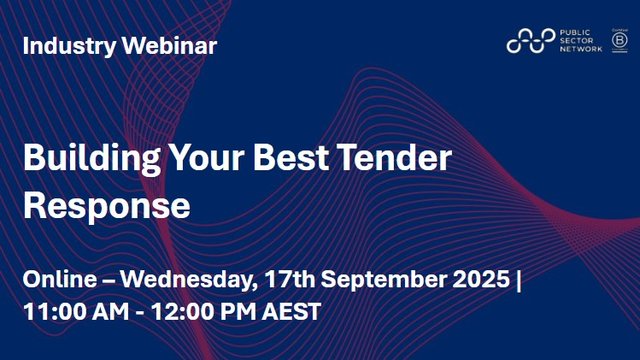
The Necessity of Connectivity
People at technology conferences often talk about the latest developments, the newest gadgets and the continued digitisations of everyday lives. These are worthy topics for discussion and necessary for the modern age, but often these discussions presuppose an important factor which is often overlooked. Stephen Bull, the Senior Assistant Deputy Minister and Corporate Chief Information Officer at Service Alberta, says that connectivity is often taken for granted.
“Connectivity underpins everything that we’re trying to do around innovation, and the people that we serve have an expectation that they can access government services 24/7 using any method that they want.” - Stephen Bull, Senior Assistant Deputy Minister and Corporate Chief Information Officer, Service Alberta
For people who live in cities or urban locations, they want to access their government services in the same way they order food through Uber Eats, or in the same way they order products through Amazon. But for those people in rural location, they just want to be connected. We saw that during the pandemic, many people moved to rural communities, but then they moved back to urban locations because of a lack of connectivity. In Alberta alone, there are about 40,000 people who live remotely and don’t have access to primary healthcare or online consultations. Due to a lack of connectivity, many school children in rural towns do their homework at the local café because they don’t have broadband at home, and farmers suffer because they don’t have access to precision agriculture. Connectivity is at the front and centre of it all.
Connectivity for All
In 2016, the Canadian Radio-television and Telecommunications Commission (CRTC) declared broadband a basic telecommunication service,[1] meaning everyone should have access to it, and some have even named it basic a human right. The federal government took note of the CRTC’s concerns, and in 2019 released a national connectivity strategy[2] which essentially sets some targets, namely that everyone in Canada should have access to a minimum speed of 50 megabits per second download, and 10 megabits per second upload (50/10), and that by 2026 the goal was to have 98% coverage, with 100% coverage by 2030. This would be called universal connectivity.
The federal aims are great and commendable, but in Alberta we can’t wait until 2030 to provide everyone with good quality broadband service. So in March 2022, the provincial government released the Alberta broadband strategy[3] which has a connectivity goal of achieving 100% service availability by the end of fiscal year 2026-27. This is going to be quite a challenge because based on 2019 figures, approximately 201,000, Albertan households did not have access to that 50/10 target speeds, which equates to nearly half a million people. More worryingly and distressingly, this figure includes 67% of rural Albertans and 80% of indigenous communities. These figures become even more concerning when deeper analysis shows that in cities like Edmonton and Calgary, some residents can have access to speeds that are double or even faster than the recommended 50/10 targets because of multiple providers, whilst in rural communities – sometimes just 20 minutes from the Edmonton city centre – there are gaps, and even if some communities have access to 10 megabits per second download, these are advertised speeds most likely at something like 3am on a Tuesday and certainly not during peak periods. The gaps may seem almost insurmountable, but in terms of the rest of Canada, Alberta is somewhat middle of the road, with Quebec the best province in terms of connectivity. Quebec will likely be the first province to achieve universal connectivity, showing that it is not only necessary, but also possible with the right resources.
Getting Towards Universal Connectivity
Since universal connectivity is a priority for the whole country, all levels of government are contributing financially towards it. In November 2020, the federal government launched the Universal Broadband Fund with nearly $2 billion in available funding, whilst in Alberta, conventional wisdom and government analysis suggests that universal connectivity will cost approximately a billion dollars for the province. A large proportion of that is intended to come from industry, though in 2021, to ensure that Alberta gets its fair share of federal funding, a memorandum of understanding was signed. By March of 2022, a total of $780 million had already been committed from industry, the provincial government and the federal government. This is a sufficient beginning and enough of a stepping stone to get the rest from municipalities and some more from the private sector to solve this problem. As part of the funding arrangements, the provincial government has also launched the Alberta broadband fund,[4] which is designed to fill any funding gaps and to assist in speeding up the process.
Part of the reason why connectivity, especially in rural areas is so hard to obtain, is because the preferred technology of fibre-to-the-home is the most costly. We are nonetheless looking to invest in fibre wherever we can, but of course it is just not viable in the more rural and remote areas or indigenous communities. In those locations, it’s a case of fixed wireless, but still appropriate to ensure true 50/10 speeds even at peak times. For other even more remote locations, the only way to get to the 50/10 targets is through low earth orbit satellites, because those areas just don’t have the density of population for any other feasible solution. The good thing about this option though is that it now provides services across the entire geography of Alberta.
With all of these provisions, and with the option to fill in any gaps that are not covered otherwise through the Alberta broadband fund, our goal is that by March 31, 2027, everyone will have access to high speed broadband in Alberta.
Featured speaker:
- Stephen Bull, Senior Assistant Deputy Minister and Corporate Chief Information Officer, Service Alberta



































